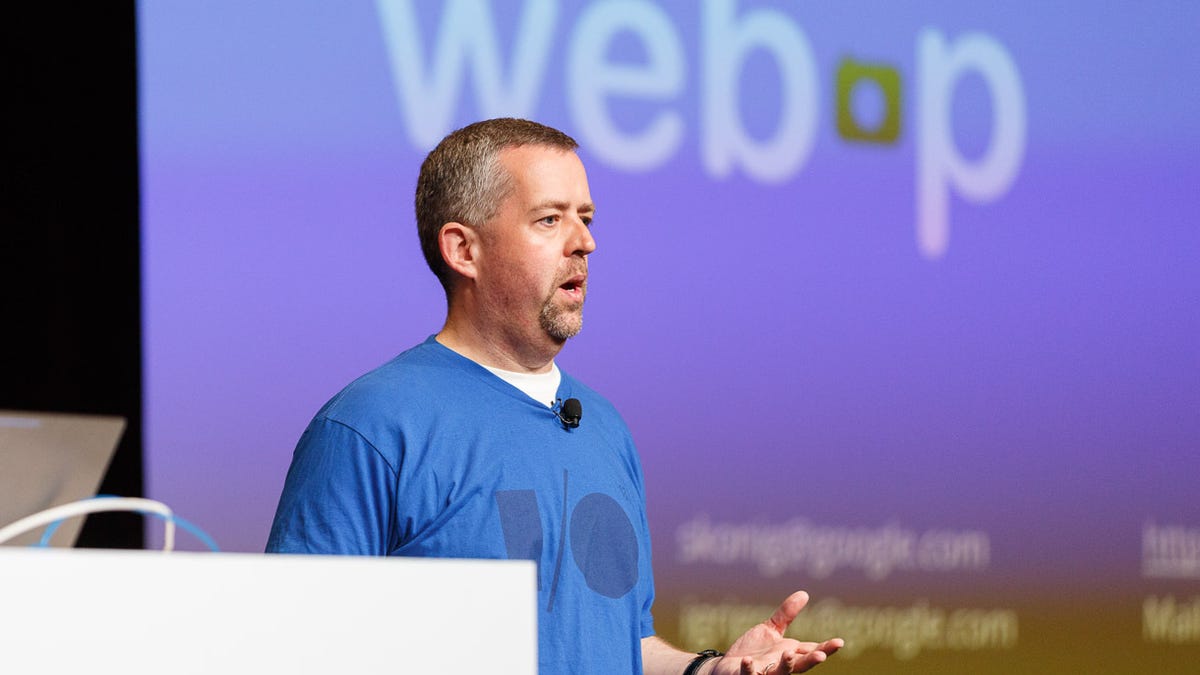Google cuts network usage by terabytes by switching to WebP
Google is happy enough with WebP to spread it across the company, including the Google+ app on Android. Also: new features coming to WebP.

SAN FRANCISCO -- A month and a half ago, Google began using its WebP image format in its Google+ app for Android, and now it's saving tremendous amounts of network usage as a result.
"We're saving many terabytes of bandwidth a day, and because of the cost factor, we're saving our users money," said Stephen Konig, a Google product manager, in a well-attended WebP Google I/O talk Friday.
Users' cost savings come because they're less likely to run into data usage caps or incur onerous roaming fees outside their home countries.
But of course, Google has self-interest here, too. It pays for its own network usage, so it's got a lot to gain financially from more efficient bandwidth usage. And when images arrive faster, apps are more responsive and customers are more likely to engage and to come back for more.
Expect more of Google to follow in Google+'s WebP footsteps. "Across the gamut of sites across Google, we are in the process of doing this transition," Konig said.
And expect changes in the file format to address its current shortcomings. Konig cited several:
• High color depth so images can store more than 8 bits of color data per pixel, something that would enable richer color data.
• Layer support, where a single image file contains different layers of imagery.
• Progressive rendering, which means images first are shown rapidly in a lower-resolution form, then are fleshed out with detail later.
Facebook has begun experimenting with WebP, too, and is encouraging Mozilla to rethink its earlier opposition to adding WebP support to Firefox.
Some Facebook users howled when they were faced with WebP images they couldn't easily share or see with their computers' file managers, because WebP support is unusual in software today. Konig said there are workarounds for such difficulties, though, and that they're short-term problems in any event.
Photoshop support would be an important step in encouraging adoption among designers and Web developers. Konig told CNET that Google has discussed the matter with Adobe and is hopeful about it, but that there's nothing to announce at this stage.
Google hopes WebP will replace today's prevailing JPEG and PNG formats. "On average, we're seeing about a 50 percent reduction in file size" on Google+, Konig said. "WebP does a pretty good job with user-generated content."
Ilya Grigorik, a Chrome developer advocate, gave another example, an elaborate but slow-loading Oakley eyewear site.
"We can take 86 megs and convert it to 28 megs" by changing PNG files to WebP files Grigorik said. "That's still massive, but it's 50 megabytes less."
One WebP advantage is that it can handle transparent sections of an image, both with lossless compression as in PNG and lossy compression as in JPEG. PNG supports transparency, but JPEG doesn't, so WebP can offer both transparency and the smaller file sizes of lossy compression. (Lossy compression throws data away while shrinking files, but lossless compression preserves an original image while still making it smaller.)
There's no free lunch with WebP, though. It takes about 5 times as long to encode a WebP image than a JPEG image, and it takes about 1.3 times as long to decode it.
"The reason WebP is smaller is because we use more sophisticated algorithms to compress," Konig said. Performance is a Google priority, and the company's goal is to reduce the encoding penalty so it's only about 2 or 3 times longer than JPEG.
Encoding speed isn't usually a big problem because images on the Web are usually created in advance then served to browsers later, Grigorik said.
The decoding penalty also is worth it, he argued.
"In the vast majority of cases, the amount of time you're saving because of fewer bytes you're sending more than makes up for the increased decode time," Grigorik said.
WebP is derived from the image compression technology used in the company's VP8 video codec. Although Google is nearly done with VP9, Google is sticking with the VP8 technology for WebP for technical reasons, Konig said.

